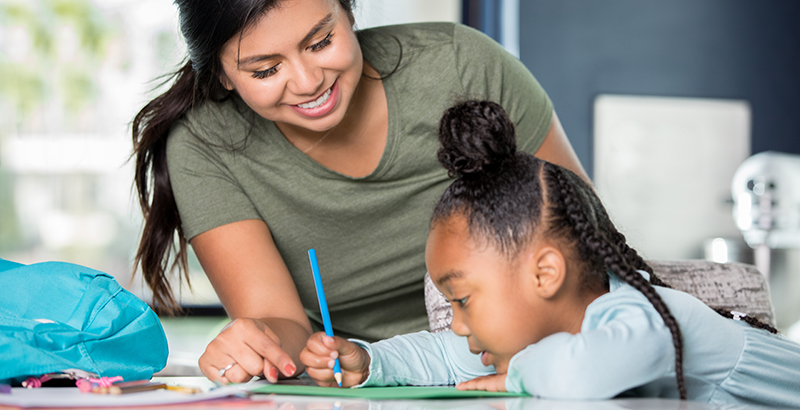Dadisman & Schneider: Tutoring Can Help Reverse COVID-Related Learning Loss. 6 Principles for Doing It Right

Pandemic-related disruptions to schooling are wreaking havoc on student learning. If estimates are anywhere near correct, our nation is facing a catastrophe. Depending on the measure of learning loss used, the Organisation for Economic Co-operation and Development estimates that America’s gross domestic product could lose close to $30 trillion (in net present value) as today’s cohort of COVID-affected students moves through school and into the labor market.
We need a sustained response to mitigate learning loss as soon as possible and into the foreseeable future to ensure the well-being of today’s students and tomorrow’s America.
Unfortunately, the pandemic’s effect on schools thus far has outpaced almost every tool we have for reversing learning loss. There is, however, an emerging consensus around at least one strategy that may provide our best chance to meet these COVID-related challenges: tutoring.
J-PAL North America, a research center focused on reducing poverty, recently released a meta-analysis of close to 100 studies of tutoring in literacy and mathematics and found that tutoring programs consistently produced large improvements in learning outcomes for students — with effects that eclipse those of most other educational programs. More importantly, this study synthesizes much of what we know about what makes tutoring effective:
- Programs led by teacher or paraprofessional tutors are generally more effective than those that used nonprofessional (volunteer) or parent tutors.
- The effects tend to be strongest in the early grades.
- Tutoring in reading tends to be relatively more effective for students in preschool through first grade, while math tutoring tends to be more effective for students in later grades.
- Tutoring programs conducted during school tend to have larger impacts than those held after school.
We have an opportunity to leverage this evidence to craft a tutoring-based response to the nation’s massive COVID learning losses. Here are some broad principles we believe must be deployed to get the most out of any tutoring initiative.
1 Organize around subjects and grade level combinations
For better or worse, schools are divided by grades and subjects, creating a complicated grid of instructional areas, like early reading, fourth-grade math, eighth-grade algebra, etc. Tutoring interventions must take into account this subject/grade matrix. The evidence is clear that tutoring will likely have a bigger impact in some of those combinations (early reading, for example) than in others.
2 Use diagnostic assessments
Successfully navigating the education demands on students in each subject/grade combination requires an assessment of where and why students are lagging. We have learned a lot about learning progressions over the last few years, including the fact that students without strong foundational skills will bump up against a ceiling that limits how far they can go. Tutoring programs to overcome learning loss must identify and then rectify weak foundations.
3 Adopt strategies that serve students from diverse backgrounds
The challenge of delivering high-quality tutoring across a wide range of grades and subjects becomes even more complex when it comes to meeting the needs of students with disabilities, English learners and children facing other challenges.
4 Avoid reinventing the wheel
Rather than asking school leaders to design their own tutoring initiatives, a more productive approach is to identify tutoring programs that already have evidence of success and focus on scaling them up — always keeping in mind that some programs will fit better with some subject/grade combinations than others.
5 Use digital learning platforms
Tutoring programs that already have demonstrated they can be successfully delivered online must take precedence.
6 Treat any rapid expansion of tutoring as an experiment
It is essential to monitor and rigorously evaluate how different programs perform, culling those that fall short and replicating those that succeed. We must continue to learn what works, for whom and under what circumstances so future tutoring programs can be executed more effectively.
If we do this right, we can deploy tutoring with more accuracy and precision, increasing the likelihood that we can overcome the severe learning losses COVID-19 has caused.
Kimberly Dadisman is senior policy and research manager for J-PAL North America. Mark Schneider is director of the Institute of Education Sciences at the U.S. Department of Education.
Get stories like these delivered straight to your inbox. Sign up for The 74 Newsletter

;)
